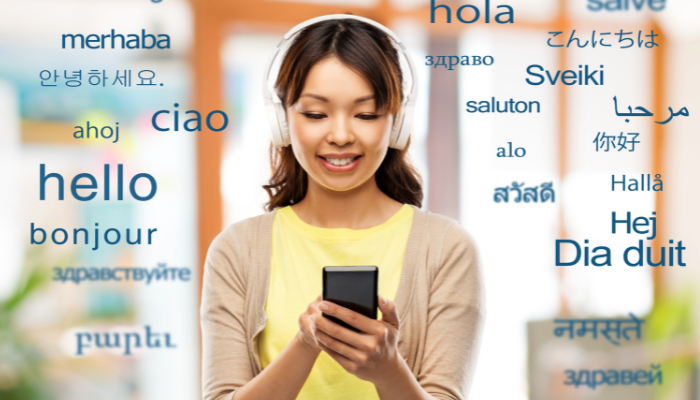In many situations, it can be beneficial to understand the characteristics of another culture and be able to speak in foreign languages. These skills are not only useful during travel but also in the professional world. Mastering different foreign languages enables collaboration with people from diverse cultures.
For a company, expanding into another market is not easy, especially when the culture is significantly different from its own.
For example, a business negotiation between a Chinese and an American party may fail due to unsuccessful bridging of cultural differences. Americans prefer straightforward, direct communication, while the Chinese lean towards indirect communication.
Hence, it is crucial to be prepared for various cultural differences. Artificial intelligence can assist us in the following ways:
Translation

Artificial intelligence can be used for example as a translation assistant. Both for understanding text written in another language and for composing text in a different language, such as an email. There are various translation programs, and AI avatars are also capable of translation. For example, with ReAvat, our avatar can speak in different languages, creating the impression that we can communicate in multiple languages. In this article, we elaborate further on how avatars can be used for translation.
Navigating Cross-Cultural Challenges in Business:

For corporations eyeing expansion into international markets, the challenges are multifold. Cultural disparities, if not addressed adeptly, can lead to miscommunication, misunderstandings, and even business failures. Consider a scenario where a Western company seeks to negotiate a deal with a counterpart in Asia; the contrasting communication preferences, negotiation tactics, and business etiquettes can pose substantial barriers. AI avatars step in as invaluable tools, not just in overcoming language barriers but in comprehending and adapting to the intricacies of cross-cultural communication.
The Role of AI Avatars in Cultural Intelligence:

AI avatars, equipped with advanced algorithms, can do more than just facilitate language translation. They serve as cultural intermediaries, recognizing contextual cues in conversations and adapting responses accordingly. This is crucial in situations where cultural nuances play a pivotal role in the success of interactions. Personalized cultural profiles for avatars ensure that they are not just language-savvy but culturally attuned, resonating with users from different backgrounds and fostering a more inclusive communication environment.
Training for Cultural Competence:

Education plays a pivotal role in developing cultural competence, and AI avatars are proving to be powerful aids in this domain. E-learning platforms leverage avatars to simulate real-world scenarios where users can practice and refine their cross-cultural communication skills. These simulations extend beyond verbal communication to encompass non-verbal cues, allowing users to navigate the subtle intricacies of body language, facial expressions, and gestures that vary across cultures.
Language Learning Reinvented:

In the realm of language learning, AI avatars offer a transformative experience. They go beyond traditional methods by not only assisting in language translation but also by providing a dynamic environment for immersive learning. Pronunciation, an often challenging aspect of language acquisition, becomes more accessible with avatars offering real-time feedback and simulation of authentic conversational scenarios. The gamification of language learning through avatar interactions adds an element of enjoyment, making the process more engaging and effective.
The Future of Cross-Cultural Collaboration:

As technology continues to evolve, the role of AI avatars in cross-cultural communication is poised to expand further. Virtual reality (VR) applications, for instance, can offer even more immersive experiences, allowing users to step into simulated environments that mirror the intricacies of diverse cultures. From business negotiations to healthcare interactions, the potential applications are vast, promising a future where AI avatars become indispensable allies in fostering global understanding and collaboration.
In conclusion, the exploration of cross-cultural communication with AI avatars goes beyond linguistic translation; it delves into the realm of cultural intelligence, training, and immersive learning experiences. These digital entities serve as bridges, connecting individuals and businesses across diverse cultural landscapes and paving the way for a more harmonious and effective global discourse.








